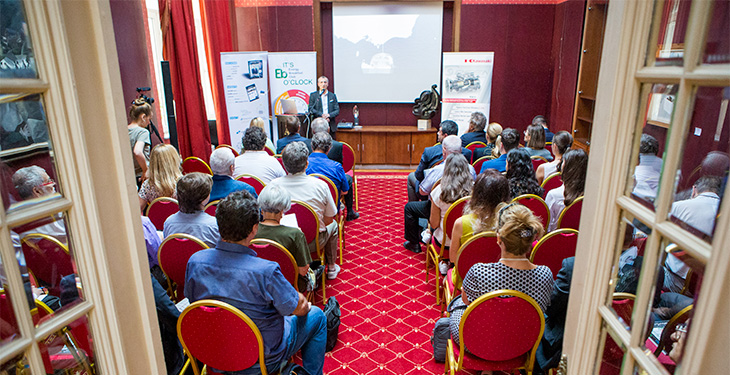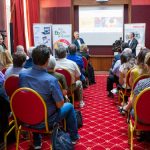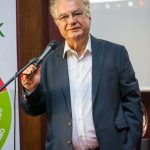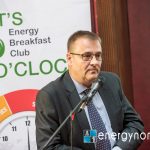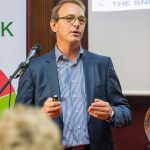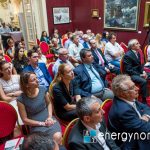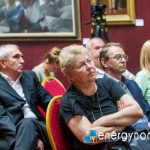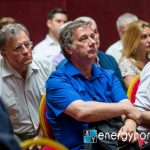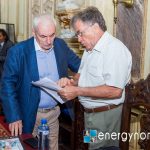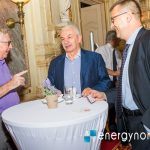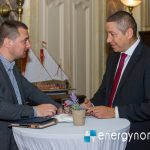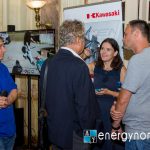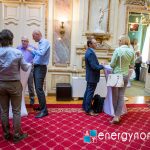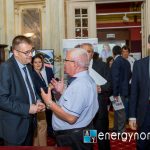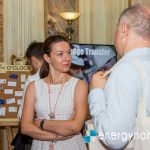The legislative changes that are foreshadowed in the natural gas sector, respectively the renunciation of regulated prices, are welcomed by the industry and create premises for the resumption of the growth cycle. However, it takes time to get back to normal and the costs are high, said Septimiu Stoica, President of the General Meeting of Shareholders of the Romanian Commodities Exchange – BRM, during the Energy Breakfast Club – Oil & Gas – E&P, Transport and Processing – an event organized by energynomics.ro. At the same time, Kawasaki’s representative for South-East Europe noted an inexplicable slump in the private sector.
Stoica, BRM – Waiver of GEO 114 means a return to normal, but the effects will come slowly
The effects of GEO 114/2018 and of the other developments in the regulatory framework were perverse in terms of prices, traded volumes and market behavior of the big players. At the end of last year and the beginning of 2019, through the emergence of GEO 114, the activity of BRM was blown over.
- Septimiu Stoica, BRM
- Cristian Athanasovici, Kawasaki
- Bart Wauterickx, The Sniffers
”Between 2013 and 2015 we traded 6.65 TWh. In 2016, 15.5 TWh, in 2017 and 2018, 70 TWh each – almost 70% of the volumes on the gas markets in Romania. What happened from January to May? [We are] well below 1 TWh per month. It was only in June, July and August we exceeded a few TWh: 3 TWh in June, 1 TWh in July and 4 TWh in August. Market operators are trying to come back… Now, with the changes that are foreshadowing, respectively the renunciation of the regulated prices, reintroduced absolutely shockingly on the Romanian market, we hope that things will change,” said Stoica.
Unfortunately, “in the economic world, the returns to normality are not as easy as the exits off normality,” explains Stoica, and “the costs are much higher, the recovery is slow and you do not return exactly to the same point”.
“The good news is that there is hope for a resumption of the growth cycle,” he added. Read FULL ARTICLE!
Kawasaki trusts the development of the Romanian market, currently “numbed”
Kawasaki opened a new office in Romania at the beginning of last year. Although the optimism regarding the development of the market in the short term is moderate, in the long term the economy will recover. “Within the responsibilities I have in the South East Europe, I try to come with a new breath in Romania… There are investment funds currently available, such as POIM 6.4, but there are few interested investors (in cogeneration field). In the private sector there is a numbness that I cannot explain,” said Cristian Athanasovici, Business Development Manager, Kawasaki Gas Turbine Europe.
“Kawasaki is a large company, with a portfolio including high-speed trains, natural gas transportation vessels, motorcycles, energy equipment and robots. It has been present in Europe since 1975, and since 2003 it has its own gas turbine production site in Europe, around 20 km near the Frankfurt airport, in Bad Homburg” says Athanasovici.
“We are trying to develop the cogeneration market using high quality, high efficiency equipment and low pollutant emissions.”
DOWNLOAD THE PRESENTATION OF CRISTIAN ATHANASOVICI
The range of products includes gas turbines ranging between 1.7 and 34 MWe and internal combustion engines of 5.2 and 7.8 MWe; in addition, the company offers engineering, implementation and maintenance services for power plants, supplemented by long-term service, Athanasovici said, presenting the company’s products and services. Read FULL ARTICLE!
Wauterickx, The Sniffers: Methane reduction is an opportunity in Romania
The Sniffers is an environmental service provider for the oil and gas industry. ”We are operating worldwide, focusing on Upstream, Midstream and Downstream for O&G activities. We help companies reduce their emissions into the atmosphere, to maintain the integrity of their pipelines and we help them save energy”, said Bart Wauterickx, CEO of The Sniffers. The company has an office in Bucharest and one in Ploiesti under the umbrella of the mother-company, WTS Energy.
In Romania, according to International Energy Agency, the methane emissions reached 1.2% of overall volume produced globally in 2015 from exploration and production activities; that was 185 thousand tons of emissions. „Compared to other countries, this is not best in class, so there are a lot of opportunities to improve.”
DOWNLOAD THE PRESENTATION OF BART WAUTERICKX
Onshore conventional gas is responsible for the most methane emissions in Romania, followed by Downstream gas and onshore conventional oil – the three segments are the largest issuers of methane. „Most of it comes from methane being released directly into the atmosphere.”
According to IEA, there are various technologies that can reduce methane emissions, and half of them can be applied at no net cost, but can reduce methane emissions by 38%. The Sniffers representative presented a methane accounting and management program through which companies are supported to accurately report their emissions. The Sniffers also comes with adapted solutions to reduce these emissions, Wauterickx concluded. Read FULL ARTICLE!
Energy Breakfast Club was organized by energynomics.ro and supported by our partners: BCR, Bursa Română de Mărfuri – BRM, Kawasaki Gas Turbine Europe Gmb, Ridgid – Emerson, The Sniffers.
Over 40 representatives from Academia Română, Actemium, Ambasada Franței, AMS Alconex Metrology, Asprofos SA, Atlantis ProCons SRL, BCR, Bioterpena Sustem, Ambasada Bulgariei, Bursa Română de Mărfuri, COS TGV, cursdeguvernare.ro, ELCEN, Elux Rodit, Emerson, Energie F K, EnergoBit, Enpower, FPPG, Grup OMIR, ING, Jereh, Kawasaki, Mitsubishi Corporation, OMV Petrom, Organismul Național de Stanrdardizare – ASRO, Phoenix Contact, Premier Energy, The Sniffers, WTS Energy attended the presentations and participated in discussions.
Participation
This year, energynomics.ro will organize a least 6 Energy Breakfast Club meetings. The schedule and the proposed themes for 2019 are available in the Energy Breakfast Club dedicated page.
